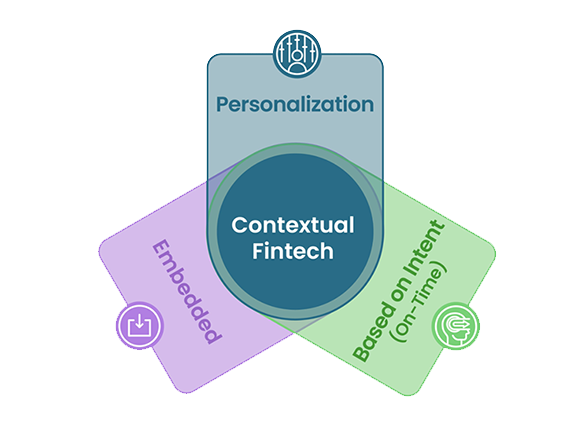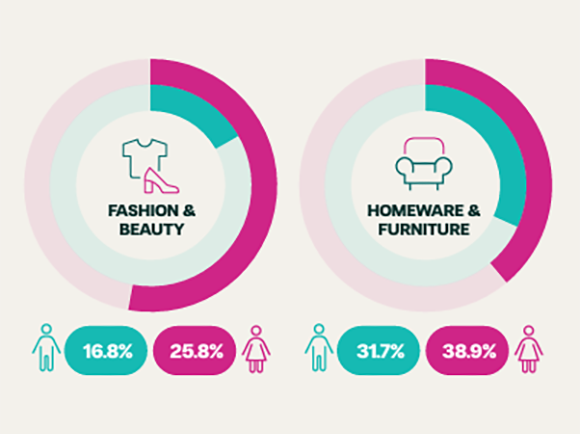Retail finance and the cost of living crisis: How to lend for good

Not a day goes by without a gloomy statistic detailing the demise of our living standards.
Inflation hit a record 40 year high in June, reaching 9.4%. This was up from the Consumer Price Index inflation rate of 9.1% for May – which was a historic high at the time.
The latest figures suggest British households are now reportedly £8,800 worse off than their peers in other countries.
As consumers seek alternative ways to manage their money, Short-term Interest-free Credit (STIFC) and Buy Now, Pay Later (BNPL) products have seen a spike in usage.
Consumers made more purchases using BNPL since the cost of living crisis started. 86% of retailers said they experienced a surge in demand since the beginning of the year, according to Barclays Bank and the debt charity Step Change.
This is good news for every party involved: lenders, merchants and consumers. These products ensure lenders and retailers can sustain the level of business they need to survive, while consumers get increased flexibility and a way to get through a particularly difficult period.
However, reports also suggest around one-third of consumers using BNPL are struggling to meet repayments. Those in financial difficulty are likely to experience further turmoil as the cost-of-living crisis matures, if the retail finance sector does not act responsibly.
What’s morally right will soon become legally binding
With no sign of the macroeconomic environment improving any time soon, the sector must consider what it means to operate responsibly.
The onus to do this is on merchants, lenders and providers. The industry has a Duty of Care to protect its consumers and must be proactive in adapting to the changing regulatory landscape.
A lack of regulation has led to some questionable lending practices, which have tarnished the reputation of the sector.
Consumers have reportedly been coerced into credit agreements marketed as just another payment option. Where they have failed to meet these repayments, their financial health has been impacted by late fees, debt collection and a lower credit score are all potential penalties.
New regulation will ensure stricter communications around finance products and new consumer protections. This regulation will come into effect in mid-2023, as will a new Consumer Duty, which will ensure retailers have considered their consumers when implementing financial products.
The opportunity
The cost of living crisis presents an opportunity for the retail finance sector to help consumers navigate skyrocketing prices, inflation and interest rates by providing an affordable alternative to traditional credit.
BNPL and STIFC, when provided responsibly, are more ethical alternatives to traditional forms of credit. But they must be provided responsibly.
Consumers will still need to make purchases throughout the cost of-living crisis. Checkout finance can help them to do this by minimising the impact of these purchases.
Setting minimum limits for retail finance on basket sizes will ensure consumers do not enter into unnecessary credit agreements. Working with Tier One lenders will ensure you operate within a regulated framework. But what else can you do to support and protect consumers during this difficult period?
Here are three top tips for ensuring you lend for good during the cost of living crisis.
1. Treat BNPL as an affordable, efficient alternative to traditional credit
Critics of retail finance often ignore its major advantage over other forms of credit: affordability.
Traditional business models for financial products charge a percentage of interest to the consumer in return for capital. BNPL, on the other hand, is typically interest free. With BNPL, the merchant pays a fee in return for proven increases in average order value, basket conversions and revenue.
What this means is that consumers have access to free credit.
This type of credit is useful in many ways, particularly when it comes to making larger purchases. Let’s consider some scenarios consumers are likely to face over the coming months.
Boiler issues
It’s winter time and, as luck would have it, Sanjay’s boiler has broken down.
Money is tight, energy prices are still going up, inflation is at 11%, and new school uniforms have wiped out the last of Sanjay’s savings.
But his family cannot live without heating in the colder months – meaning his only choice is to finance a replacement boiler, costing around £2,000.
Sanjay could choose the traditional route and pay with his credit card.
But if it takes him two years to pay back, while he accrues interest at 15%, Sanjay will end up paying an additional £292. That’s just more money Sanjay can’t afford.
This is not the case with checkout finance. With short-term interest-free finance, Sanjay could pay in instalments over a short period, anywhere between 3 to 24 months (or even longer), without paying a penny more than the original cost.
When affordability is the number one concern – as it will be for millions in the cost of living crisis – the benefits of having quick, easy access to short-term interest-free loans are immediately apparent. Compared to the alternative – charging customers like Sanjay debilitating interest on essential purchases – BNPL clearly emerges the more palatable, indeed the more ethical option.
Why, after all, should consumers be penalised for circumstances outside of their control – like the cost of living crisis?
Consumers will still need to spend on higher ticket items throughout the crisis. The unfortunate boiler breakdown scenario needn’t put consumers like Sanjay into further financial hardship.
Retail finance can be used as a force for good, as a tool that allows consumers to spend in a more flexible way.
Top tip: Provide retail finance for the products that will make a difference to your consumers lives.
2. Position BNPL as a way to support peoples’ lives, livelihoods and lifestyles, rather than ‘just another payment option’
We are of the opinion that retail finance should not be used for everyday essentials like food and fuel.
Of course, enhanced money management is a major benefit of BNPL. But taking out a loan for a weekly shop, a pair of socks, or petrol to get to work is a slippery slope and may be a symptom of underlying issues with one’s financial health.
Retail finance should instead be offered for bigger ticket items – the larger essentials that are needed to support one’s lifestyle that generally require more consideration than, say, fast fashion.
Now, determining what is a necessity is subjective. The mother who wants to take her children on a cycling holiday but cannot afford to pay for the family’s bicycles up-front may think of the bikes as a necessity. And she is absolutely within her right to do so.
The point is, retail finance can empower consumers to make financial decisions they otherwise would not have been able to make. It can be a powerful tool for money management when used responsibly, with the ability to connect consumers with the products and services they need at a time when it matters most. It connects money with life.
It should therefore be positioned as such, to ensure consumers utilise retail finance for the purchases that make a real difference.
This is not to say that BNPL should be marketed as a gateway to the lifestyle one has always wanted. Indeed, aspirational marketing campaigns in the retail finance space have garnered a wide-range of criticism, which will come as no surprise when you learn that these ads often target young consumers, showcasing lifestyle products while excluding any mention of ‘loan’ or ‘credit product.’
But there are still many high-value, lifestyle-oriented purchases finance-conscious individuals will want to make, even as times get tough – and retail finance can help to enable these purchases.
From engagement rings to new furniture, electronics to family Christmas presents, home improvements to cycling holidays, and more. Austere spending conditions needn’t be a barrier for people to forego once-in-a-lifetime expenses, so long as they are well-informed about the implications of their purchasing agreements and fully aware that they are indeed taking out a form of loan.
Top tip: Position your retail finance product for what it is – a flexible way to support money management, during a period when it could make all the difference.
3. BNPL is a way to help customers protect themselves against rising costs
It’s not just food and fuel prices that are rising – 33% of consumers globally have noticed a significant increase in the price of cars according to a recent YouGov poll. Meanwhile, 31% of consumers have noticed a surge in the price of electronics.
In the United States, the rise in the cost of technology like smartphones pales in comparison to the percentage increase in the price of food. But technology products, for example, are naturally bigger ticket items; a 1% increase in the price of an £800 smartphone is greater than a 124% increase in the price of orange juice.
Why are prices for bigger ticket items rising? The global strain on supply chains, in part due to war in Ukraine, has increased the cost of raw materials, transportation, manufacturing and import. These are being passed on the consumer as a result, increasing the price of products in the majority of markets.
With a recession looming, prices continuing to rise, and no clear indication of when the cost-of-living crisis will end, there is an argument to be made that retail finance can be used as a tool to protect against the skyrocketing prices of larger consumer goods.
Take, for example, furniture. The price of furniture rose 16.8% in March, a result of exportation issues with Timber from Ukraine and an increase in energy costs for the factories that manufacture the products.
Consumers needing to buy a new bed without the cash reserves to do so are faced with several options: take out interest-bearing credit, save, or use retail finance.
Interest-bearing credit, as we have discussed, adds to the total cost over time, and is therefore not the most affordable route.
Saving is seemingly more cost effective, but it could take at least a year before enough money has been put aside to make the purchase. By that point, the price of beds will have increased further due to runaway inflation. This also delays the purchase, meaning the consumer is without their new bed throughout this period despite needing it the moment they began saving.
Again, this option is not cost effective, nor is it time efficient.
Retail finance, on the other hand, can allow an instant purchase while protecting against increased costs. Once the agreement is secured, the consumer will make fixed scheduled repayments regardless of outside inflationary pressures. Even if the price of the bed increases next month, the customer will not have to pay more than they have already agreed.
The consumer also gets their bed at the time of the transaction.
Top tip: Communicating anticipated price increases with your customers can protect them from rising costs and also creates urgency to boost your sales.
The bottom line
Consumers should not be penalised with the high interest rates traditional credit products charge.
Retail finance offers a penalty free alternative for consumers to manage their money. Make sure it’s available for the products that will make a difference to their lives. Be sure they know it’s available, and be transparent with any anticipated price increases.
Divido is the platform partner enabling lenders and merchants to launch their own-brand checkout finance, fast. Consumer journeys are seamless, and can be optimised to convert more customers at every point of sale, online and in-store.
You might also
be interested in
Keen to know more?








